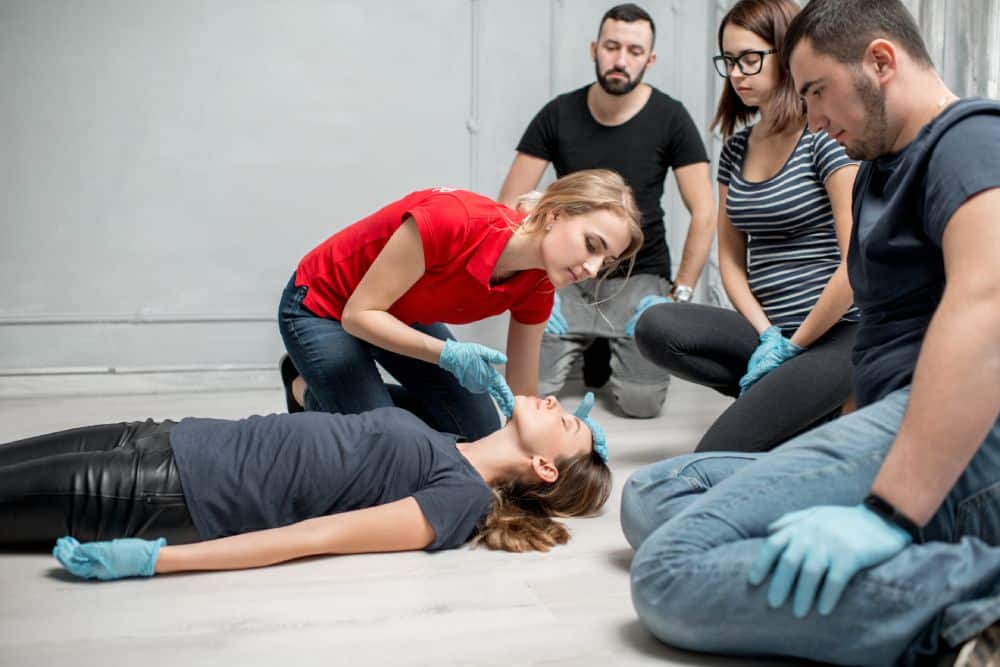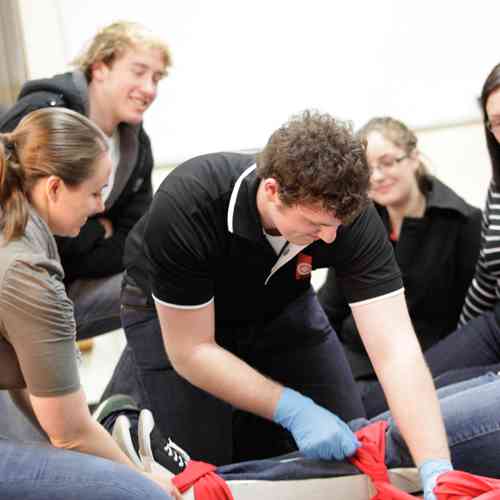Introduction
Cardiopulmonary Resuscitation (MOUTH-TO-MOUTH RESUSCITATION) is greater than just a collection of breast compressions and breaths; it's a life-saving ability that can be the distinction between life and death in emergency scenarios. The understanding gained from a first help course or CPR course can equip individuals to react efficiently when faced with a heart attack, choking incident, or various other important emergency situations. This write-up explores the real-life applications of mouth-to-mouth resuscitation, highlighting its relevance and the impact of training on conserving lives.
Real-Life Applications of CPR: When Training Saves Lives
Understanding CPR
CPR is an important emergency treatment utilized to maintain mind feature till further procedures are required to bring back spontaneous blood flow and breathing. It entails 2 elements:
Chest Compressions: These mimic the heart's pumping activity to keep blood flow. Rescue Breaths: These supply oxygen to the lungs, necessary for survival.The effectiveness of CPR considerably raises when performed right away after heart attack. Research studies reveal that prompt mouth-to-mouth resuscitation can double or triple the opportunities of survival for victims.
Importance of First Aid Courses
First aid programs gear First Aid Course Melbourne up individuals with crucial skills past mouth-to-mouth resuscitation, consisting of wound treatment, identifying strokes, and handling fractures. By participating in these training courses, you're not simply finding out about emergency situations; you're preparing on your own to act decisively when it matters most.
Key Components of Emergency treatment Courses
- Basic Life Assistance (BLS): Covers grown-up, youngster, and infant mouth-to-mouth resuscitation techniques. Choking Relief Techniques: Includes back strikes and abdominal thrusts. Wound Management: Exactly how to clean up and dress injuries properly. Recognizing Emergencies: Understanding when to call for aid versus dealing with a circumstance independently.
The Duty of CPR in Heart Attack Situations
Every year, hundreds of thousands experience cardiac arrest outside hospitals. Without prompt treatment, the survival rate drops considerably every minute that passes without CPR.
Statistics on Heart attack Survival Rates
|Time Without CPR|Survival Rate (%)|| ------------------|-------------------|| 1 Min|90|| 5 Minutes|50|| 10 Minutes|10|
Source: American Heart Association
Being trained in mouth-to-mouth resuscitation ensures that bystanders can step in confidently during these essential moments.

Real-Life Study Showing Effective Mouth-to-mouth Resuscitation Application
Case Research 1: The Quick-Thinking Bystander
In a bustling coffee shop one sunny First Aid Course Mackay afternoon, a private broke down as a result of cardiac arrest. A close-by diner that had finished a first aid and CPR course delved into action. They began providing chest compressions while another customer called 911. Within minutes, paramedics arrived and utilized an Automated External Defibrillator (AED), ultimately restoring the patient.

Case Research study 2: Work Environment Emergency
During a business training occasion, a worker all of a sudden fell unconscious. The good news is, a number of associates were certified in both first aid programs and sophisticated life support strategies. Their speedy feedback included calling emergency situation solutions while carrying out premium CPR till assistance arrived.
Why Join CPR Courses?
CPR courses deal hands-on training that constructs confidence in your capacities during emergency situations. Right here are some compelling factors to register:
Life-Saving Abilities: You discover how to save lives. Boost Self-confidence: Practical exercises aid cement your skills. Certification Opportunities: Lots of courses supply certifications upon completion. Community Impact: Educated people add favorably to culture by being ready for emergencies.What Are the Different Sorts Of CPR Courses Available?
When taking into consideration which training program suits your needs best, it's important to understand the different types of offered courses:
Basic Adult/Child/Infant CPR Course
This training course focuses on age-specific methods customized for adults, kids, and infants with thorough hands-on method on mannequins.
Advanced Cardiovascular Life Support (ACLS)
Geared toward healthcare specialists, ACLS builds upon fundamental life assistance skills with sophisticated treatments like medicine administration and progressed respiratory tract management.
Pediatric Advanced Life Assistance (FRIENDS)
Designed for healthcare providers who take care of seriously sick babies and kids; PALS includes scenarios details to CPR Course Perth pediatric emergencies.

Online vs In-Person Training
Many organizations now supply on-line components which can supplement conventional class understanding yet do not change hands-on technique important for grasping skills like upper body compressions.
Benefits of Having an Emergency Treatment Certificate
Obtaining a first aid certification shows your commitment to safety and security and preparedness in various atmospheres-- whether at home or work-- boosting both specialist reliability and personal guarantee when emergency situations arise.
Career Advantages
Having qualification can enhance employability in fields such as education, healthcare industries, physical fitness training sectors where safety and security is paramount.
Common Misconceptions Regarding CPR
It's essential to dispel myths surrounding this vital skill set:
Myth # 1: "Only Medical Professionals Must Execute mouth-to-mouth resuscitation"
Fact: Any individual can perform fundamental life-saving methods if educated appropriately; you don't need medical expertise!
Myth # 2: "You Can Damage Somebody by Performing mouth-to-mouth resuscitation"
While it's true there's some threat entailed-- it's much outweighed by the possible advantages when carried out correctly!
Myth # 3: "CPR Is Only Essential For Grownups"
Children likewise need prompt treatments; therefore recognizing pediatric approaches is just as vital!
FAQs Concerning Real-Life Applications of CPR
FAQ 1: What should I do if I see someone collapse?
If you witness a person collapse:
- Check responsiveness Call emergency services Begin carrying out mouth-to-mouth resuscitation instantly if they reveal no indicators of breathing
FAQ 2: Just how typically need to I renew my certification?
Most organizations advise restoring your emergency treatment certificate every 2 years because of advancing guidelines and practices.
FAQ 3: Can I discover mouth-to-mouth resuscitation online?
While online courses supply valuable information, hands-on method is needed for grasping skills efficiently-- seek hybrid choices if possible!
FAQ 4: What are some tips for carrying out effective upper body compressions?
Aim for:
- A deepness of at the very least two inches A price around 100-120 compressions per minute Allow full recoil in between compressions without lifting hands off the upper body
FAQ 5: Do I need special devices for executing rescue breaths?
No special equipment is called for! Nonetheless using obstacle tools like face shields can enhance safety and security while supplying rescue breaths if available.
FAQ 6: What function does AED play in conjunction with CPR?
Automated External Defibrillators evaluate heart rhythm & & advise whether shocks are needed which considerably enhances opportunities of survival when used alongside top notch breast compressions!
Conclusion
The real-life applications of CPR are undeniable; they prolong much beyond academic expertise right into real circumstances where lives are saved via decisive actions taken by experienced people. Enlisting in a comprehensive first help course or going to specialized CPR courses furnishes you with vital skills that can make all the difference during an emergency scenario-- not just benefitting others but equipping on your own as well! The moment spent today prepares you for whatever tomorrow may bring-- and isn't that something worth considering?